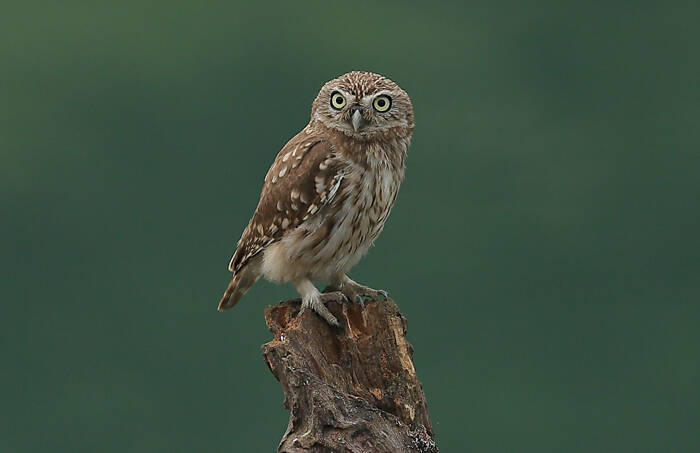Otus brucei
IUCN
LCBasic Information
Scientific classification
- name:Otus brucei
- Scientific Name:Otus brucei,Pallid Scops Owl
- Outline:Raptor
- Family:Strigiformes Owl
Vital signs
- length:21-22cm
- Weight:About 110g
- lifetime:About 10-15 years
Feature
The ear feathers and facial disc are more obvious
Distribution and Habitat
The vertical-striped horned owl is only found in western Xinjiang in China. Outside China, it is distributed in Central Asia, western India, Afghanistan, Iran, Iraq, Syria and Palestine.
The vertical-striped horned owl inhabits farmland and forest areas in low mountains and plains, especially in low mountain valley forests, bushes near cultivated land, orchards and woods near residential areas. Sometimes it also appears in wilderness and semi-desert areas covered with plants, and can even be seen in subalpine areas at an altitude of 2,800 meters.
Appearance
The face of the vertical-striped horned owl is gray, and the ear tufts are not obvious and also gray. The wrinkles around the face are gray with dark brown tips; the forehead and sides of the head are gray with dark brown tips; the rest of the upper body is light gray brown or light brown. It is yellowish white, with fine dark brown beetle-like spots and black vertical stripes; the outer coverts of the shoulder feathers are yellowish white with black tips, the upper wing coverts are the same as the back, and the outer coverts of the outer coverts have more obvious yellow spots. The primary flight feathers are dark brown with gray tips and thin light spots on the inner feathers; the first primary flight feather has light brown spots, and the remaining flight feathers have 3-4 white horizontal spots on the outer feathers. The tail is ocher gray with dark brown beetle-like spots and unclear light horizontal spots. The chin is white, and the rest of the lower body is light yellowish white,
Details
Pallid Scops Owl is a small osprey with 4 subspecies.

Pallid Scops Owl usually moves alone or in pairs. It is nocturnal and moves mostly at dusk and night. It mainly feeds on insects, and also eats small rodents and birds. The call is monotonous, a two-syllable sound, often repeated for a long time. The male bird makes a sonorous and loud low-pitched "whoop" sound, often repeated for a long time, about eight times every five seconds; it also makes a longer "whaoo" call, once every 3-5 seconds, or a "boo-boo" sound.
The breeding season of the vertical-striped horned owl is from April to June. It nests in tree holes, and often uses old nests of corvids and nests in wall holes and old buildings. Each nest lays 4-6 eggs, which are white and 29-33 mm × 25-28 mm in size, with an average size of 31.1 mm × 27.3 mm. The female bird incubates the eggs.
Listed in the 2012 Red List of Endangered Species of the World Conservation Union (IUCN) ver 3.1 - Least Concern (LC).
Listed as a Class II protected animal in the "National List of Key Protected Wildlife" issued by the Ministry of Forestry and the Ministry of Agriculture of China on January 14, 1989.
Listed as a Class II protected animal in the "National List of Key Protected Wildlife in China".
Protect wildlife and eliminate game.
Maintaining ecological balance is everyone's responsibility!








